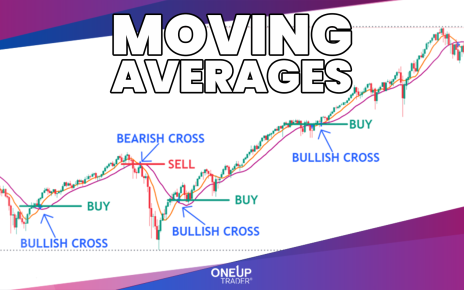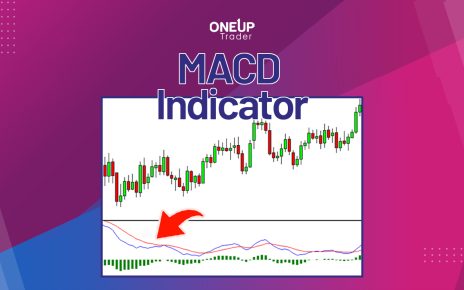It’s no secret that trading can be a stressful endeavor. Regardless of how well you do your research, how great your strategy is, or how thoroughly you’ve analyzed the market, you’ll face tough decisions and may be prone to make mistakes in your trading.
The good news is that that’s how you learn and improve. On the other hand, you can become so overwhelmed by the market volatility and the sheer volume of information available that your mind cannot force itself to make a decision when it needs to. That’s known as analysis paralysis (AP).
Virtually every trader encounters it at some point in their trading career. Even the most renowned trading experts are susceptible to it, but that doesn’t mean you should succumb to this phenomenon and give up. Traders who adopt technical trading techniques are particularly vulnerable to AP. They are generally driven individuals, meticulous, analytical, and deep thinkers, thus, tending to over-analyze their trading decisions
It would be best to learn to overcome and avoid analysis paralysis to minimize your losses and maximize your profits. Take a look at what you’ll need to do to ensure that you trade with confidence every time.
What Exactly is Analysis Paralysis?

To avoid AP, you first need to know what it is. In simple terms, it’s the inability to decide on multiple options or data available to you. However, it’s more complex than simple indecisiveness.
It involves overanalyzing every minute detail to such an extent that it renders you unable to think at all – you can’t make a decision, process information or move forward. Effectively, you become ‘paralyzed,’ which significantly impedes your performance as a trader.
Analysis paralysis is quite similar to what many refer to as choice overload – a phenomenon that virtually every consumer has experienced. You go to the store to buy new shampoo, for example, only to come home empty-handed (or with the same shampoo you always use, even though you can’t stand it) just because you had too many options to choose from.
You experience decision fatigue and get overwhelmed by the sheer number of choices you have in front of you.
With shampoo choice overload, the worst thing that could happen is that your hair isn’t its best. With trading analysis paralysis, however, the worst thing that could happen is that you lose your capital and irreparably damage your portfolio.
You’ll recognize analysis paralysis by your behavior:
- You delay making a decision;
- You’re afraid of making a wrong choice;
- You’re a perfectionist;
- You overthink your trading plan and strategy;
- You stick to the status quo;
- You analyze your options over and over again;
- You keep trying to find new alternatives to no avail.
Considering the severe consequences of AP, it’s evident why you need to dedicate yourself to avoiding or overcoming this behavior.
How to Avoid Analysis Paralysis

There are a few steps you’ll need to follow to avoid the snare of AP.
Be prepared for your encounter with analysis paralysis
Few traders can avoid analysis paralysis altogether, so it’s likely that you’ll encounter it sooner or later, regardless of how confident or strong-minded you are. Instead of trying not to think about it or pretending like it’s never going to happen to you, you should embrace its eventuality and prepare for it.
To start, you’ll need to analyze your normal trading behaviors – assess your strengths and weaknesses, keep track of your trading routine, pay attention to your emotional state while you trade. Ideally, you’ll want to keep a trading journal where you can journal most of your trading routines and behaviors.
Once you’re fully aware of your typical routines and trading behaviors, it’s easy to spot when you sway from them and start experiencing analysis paralysis.
The next thing you’ll need to do is develop a trading plan with a clearly defined action plan. What will you do when you become overwhelmed? How will you reach a decision when all your indicators are pointing in different directions? Which steps will you take to relax and regain trading confidence? The more detailed your plan is, the easier it will be to overcome your AP and finish your trading day feeling accomplished.
With a robust trading plan, you will be able to spot trading opportunities more easily since you’ll know what you are looking for; thus, you will be better able to resist the tendency to overanalyze and fall into the trap of AP.
Have clearly defined trading goals
Overcoming analysis paralysis and forcing yourself to make a trading decision is easiest when you have clearly defined goals and objectives. And no, “making more money” isn’t a trading goal – it’s a potential outcome.
A good trading goal would be something like “protect your trading capital.” It’s clear, process-oriented, and leads to developing a comprehensive strategy that would help you achieve your goal. Most importantly, it helps point you in the right direction when it comes time to make a decision.
Only by developing well-thought-out goals can you build a robust trading plan that aids your decision-making process and helps you avoid analysis paralysis.
Stick to as few indicators as possible
Not many traders can trade without using indicators. After all, when applied adequately to trading charts, they’re the only tool that can make complex markets clearer and allow you to make timely decisions. However, many novice traders make the mistake of relying on too many indicators.
That can be a great strategy that gives you a more comprehensive overview of the market and allows you to understand all the intricacies of a specific trade. But what happens when your indicators point in different directions? What should you do when one indicator tells you to sell while another signifies a potential bullish breakout? Encountering analysis paralysis in this instance is all but avoidable.
You’ll need to use as few indicators as possible to avoid conflicting signals and steer clear of AP. Either rely on a single trading indicator, prioritize one indicator, or wait until most of your preferred indicators align to make a decision.
Narrow your focus
New traders are often bombarded by well-meaning advice to “diversify their portfolios” – never put all your eggs in one basket, find unconnected trading fields, invest in alternative trading systems! While it is essential to commit to portfolio diversification, there is such a thing as too much diversification.
You can’t possibly devote yourself to all your trades if you constantly have to keep an eye on dozens of different markets simultaneously. It’s a recipe for analysis paralysis.
Instead, you’ll want to narrow your focus and find a few trading fields that best suit your interests, personality, and trading styles, then stick to them.
Embrace your losses
The main reason why new traders encounter analysis paralysis is that they’re afraid of losing their investment. They get stuck in a loop of overanalyzing the market, trying to find alternative causes of action, and fighting with all they have to ensure that they don’t have to face a loss. They cling to a losing trade by delaying making a decision, and they only make their situation worse.
While it’s never pleasant to lose a trade, it’s part of trading, and you need to embrace that fact. Once you’ve accepted that not all your trades need to be perfect, it will be easy to avoid AP, learn from your mistakes, and do better next time.
Final thoughts
Analysis paralysis is a serious issue that affects almost all traders at some point in their careers, regardless of their years of experience. It can potentially undermine your trading method and may cause you to miss out on quality trading opportunities. When you don’t take the necessary steps to overcome AP, it can hamper your trading performance and become an obstacle to your progress and growth as a trader.
Although making a trading decision can sometimes seem overwhelming, it’s always better to take action than freeze in fear.
Get more great insights from OneUp Trader in our range of trading strategy articles on our blog.





